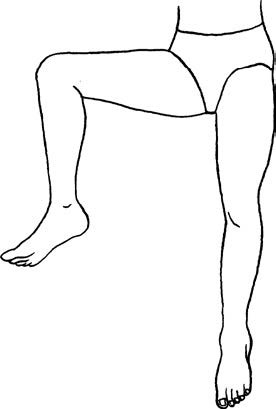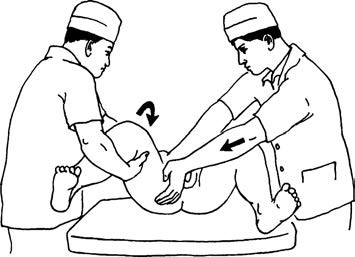Mechanism of Dislocation
Anterior hip dislocations are uncommon and typically occur as a result of traffic accidents or falls from height. The mechanism involves direct axial force applied when the hip joint is in a position of abduction and external rotation.
Clinical Presentation and Diagnosis
A history of trauma caused by significant force is present. The affected limb exhibits deformities characterized by abduction, external rotation, and flexion. Based on these typical deformities, anterior dislocation can be distinguished from posterior dislocation without difficulty. Swelling may be observed in the groin area, where the femoral head can be palpated. X-ray imaging provides information about the direction of the dislocation.

Figure 1 Typical deformity of anterior hip dislocation
Treatment
Reduction
Reduction is performed under general anesthesia or spinal anesthesia using a manual technique. The patient is positioned supine on the operating table. The surgeon holds the injured side at the popliteal fossa to allow slight flexion and abduction of the hip, while applying sustained traction along the longitudinal axis of the femur. An assistant stands on the opposite side, using both hands to apply outward pressure on the medial third of the thigh and groin area. As traction is maintained, the surgeon performs adduction and internal rotation maneuvers to complete the reduction. Failure to achieve reduction via manual techniques may indicate a defect or entrapment in the anterior joint capsule, where forceful reduction risks causing a femoral head fracture. In cases where manual reduction fails, early open reduction is indicated.

Figure 2 Reduction of anterior hip dislocation
Immobilization and Functional Training
Immobilization and functional rehabilitation follow the same protocol as for posterior hip dislocations.